A cat allergy is a common but often misunderstood challenge for many pet lovers. Those who are drawn to the warmth, companionship, and playful nature of felines might find themselves in a perplexing and sometimes frustrating situation when their beloved pet triggers sneezing, itching, or more severe allergic reactions.
Living with a cat allergy doesn't necessarily mean parting ways with your furry friend. It requires understanding the triggers, acknowledging the symptoms, and implementing thoughtful strategies to create a harmonious environment.
In the following sections, we will explore the intricacies of cat allergies and provide practical solutions for those determined to keep their whiskered companions close, without the discomfort that often accompanies this special relationship.

The telltale signs of blotchy skin echo the same story. Could it be that the cause of this discomfort is the very source of their joy—their beloved pet cat?
A surprising number of cat owners find themselves in this paradox, where their allergy to their furry family members becomes a bitter pill.
However, the joy of sharing life with their charming companions often outweighs the minor inconveniences.
The question is, are you locked in a similar battle with your own cuddly confidante, struggling with sneezes and itchy eyes?
If so, there's no need to wave the white flag just yet. There are practical solutions that can help you coexist peacefully with your feline friend, sans the sneezing.
Cracking The Cat Allergy Code
Stepping into the world of allergies can often feel like stepping into a maze. The symptoms are there, but pinpointing the exact cause can be tricky, especially when your beloved cat is under suspicion.
Before we dive deep into the nitty-gritty of the allergy detective work, let's pause and take a deep breath. Remember, this journey might seem daunting, but you're not alone.
The goal is simple: to continue basking in the love of your furry friend without those pesky sneezes and itchy eyes.
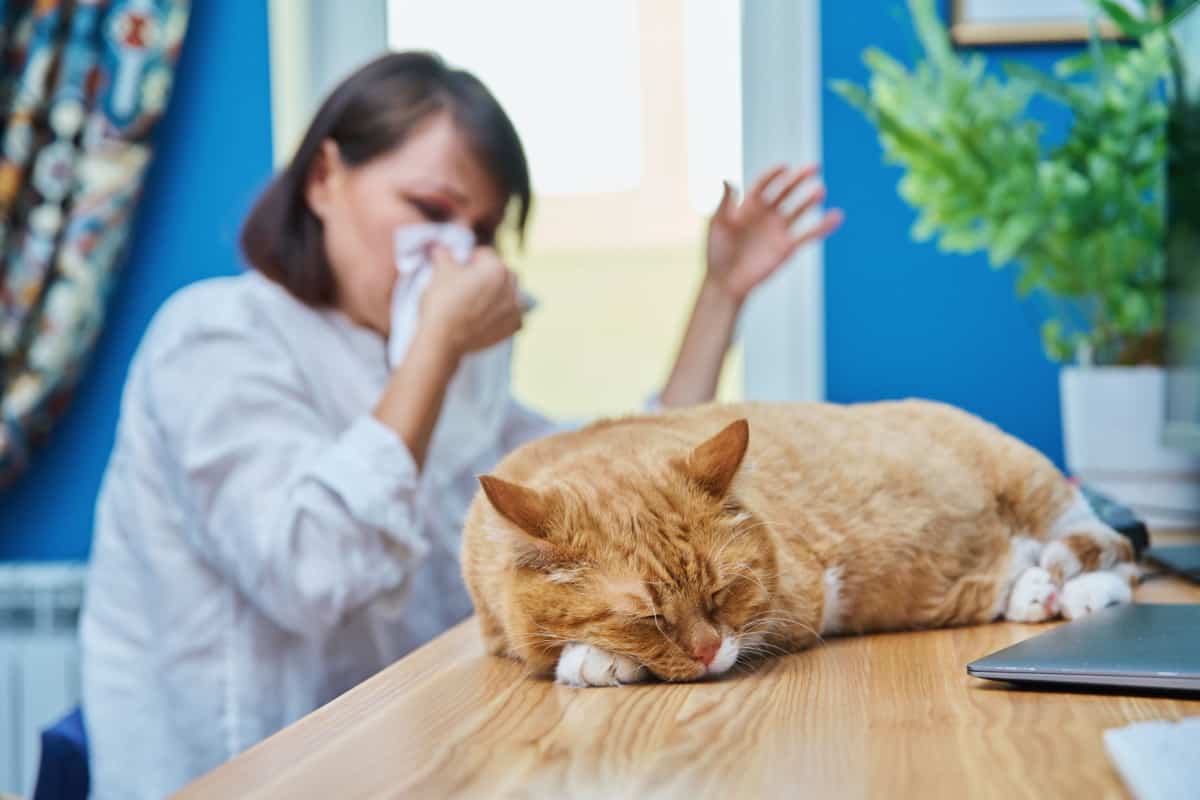
The first step in your allergy detective work is to confirm if your feline friend is indeed the culprit.
Symptoms of other allergies can often masquerade as pet allergies, leading you down the wrong path. This is where the expertise of an allergist comes in handy.
By conducting a skin test, they can precisely pinpoint the cause of your allergic reactions.
If your cat is indeed the source of your woes, don't despair. It's not a foregone conclusion that you'll have to part ways with your pet.
Instead, seek advice from a pet-friendly allergist—your veterinarian may be able to recommend one.
The world of allergies is complex, but with the right guidance, you can navigate it successfully and continue enjoying the companionship of your furry friend.
Preventive Measures
So you are allergic to your cat. What do you do? Here are some recommendations for a happy coexistence.
Establish A Cat-Free Sanctuary
Set up a cat-free zone, preferably the bedroom. Your cat should not be allowed in your bedroom.
You spend a good amount of your time at home sleeping, and this would be the best choice for a cat-free area.
Dander can build up on your sheets and blankets, exacerbating your allergies. It is worth buying zippered, allergy-proof cases for your mattress, box spring, and pillows.
Minimize Textile Use
Reduce the number of textiles in your home. Dander gets trapped in soft surfaces like carpets, upholstery, and curtains. Consider switching to hardwood or tile floors, leather furniture, and blinds.
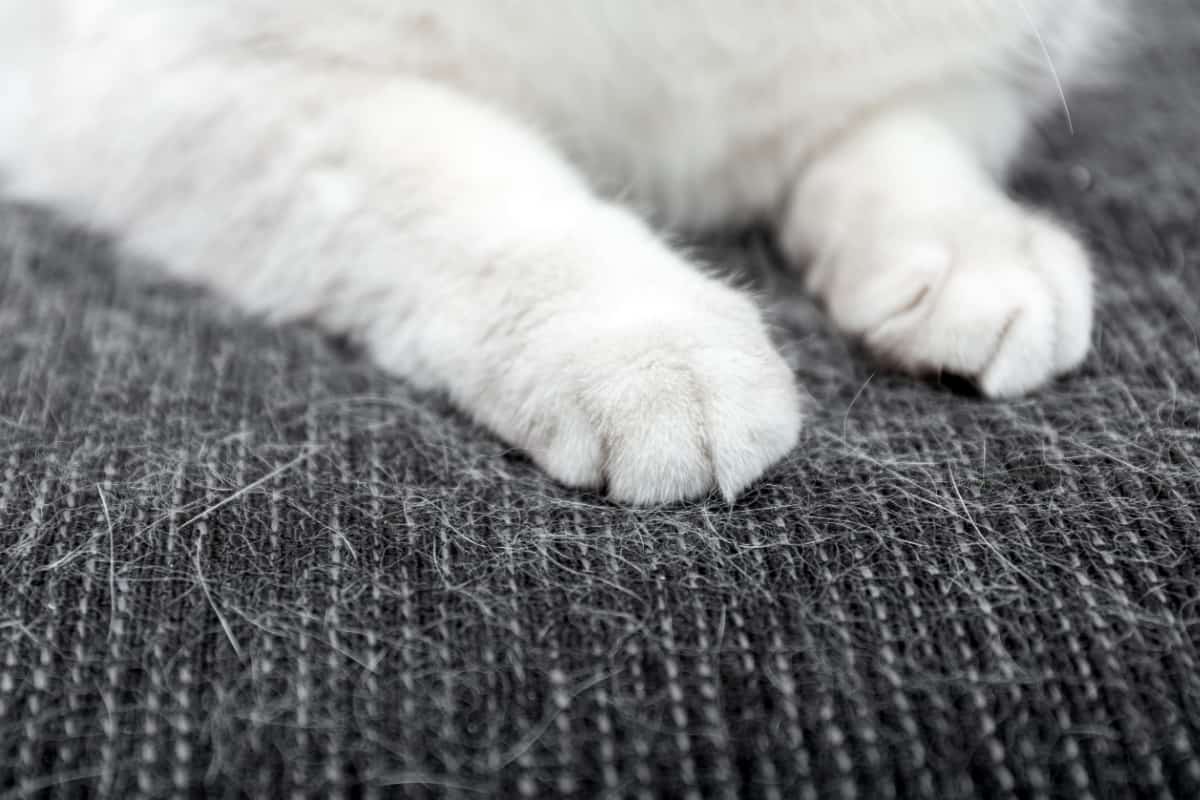
Implement Washable Pet Areas
Cats, like most pets, often have favorite spots to rest or play in around the house. These areas can accumulate large amounts of dander and hair.
By placing washable blankets or throws in these areas, you can significantly reduce the buildup of allergens.
These blankets act as a barrier, collecting the dander and hair that would otherwise be deposited directly onto your furniture or carpet.
Maintain Regular Cleaning
Clean your home frequently, wiping down all hard surfaces. Wear a dust mask while cleaning. Invest in a vacuum cleaner with a High-Efficiency Particulate Air (HEPA) filter, or use high-filtration cleaner bags.
Optimize Heating Systems
The type of heating system you use in your home can have an impact on the presence of allergens. Baseboard heating systems can be better for people with cat allergies than forced hot air systems.
This is because forced air systems can distribute allergens around your home as they circulate the air.
If you do have a hot air system, it is crucial to change filters frequently to minimize the circulation of allergens.
Opt for high-quality, allergen-trapping filters and replace them according to the manufacturer's guidelines, or more often, if you notice you're having increased allergy symptoms.
Regular Cat Grooming
Brushing your cat frequently can help reduce the amount of dander and loose hair in your environment, which are major contributors to cat allergies.
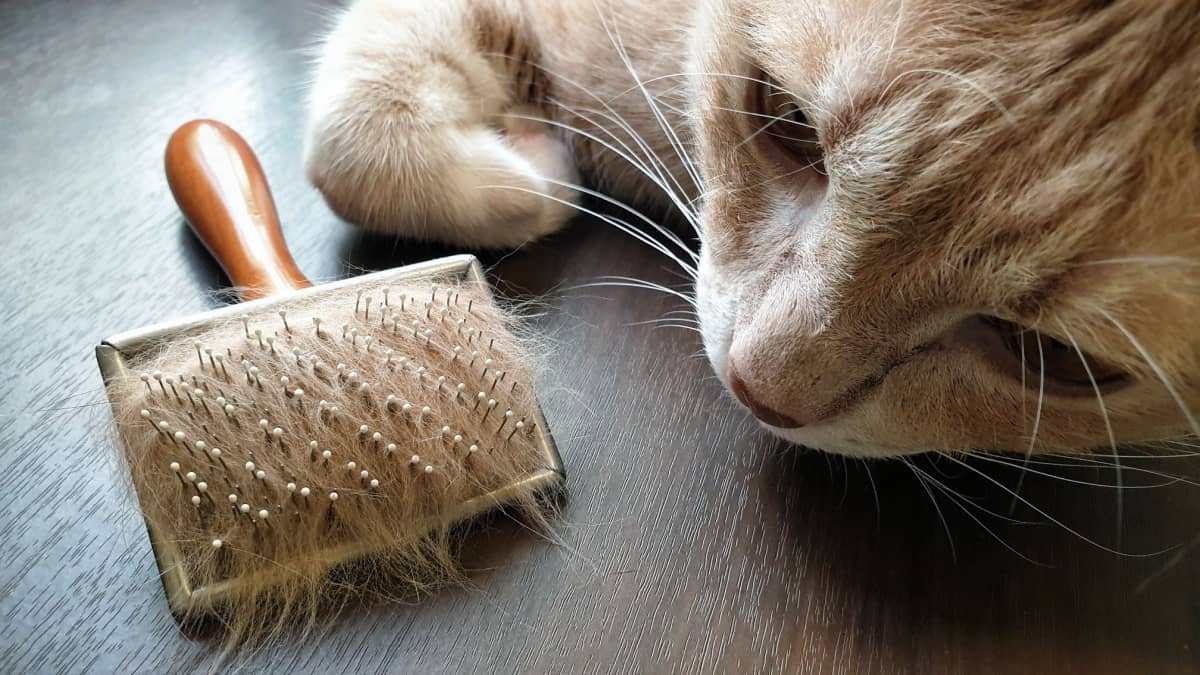
During grooming, you're removing the loose hairs that would otherwise be shed around your home and, with them, the allergens.
If possible, have a non-allergic household member take care of this task, as it can cause significant exposure to allergens.
Whether you're doing the grooming or someone else is, it's a good idea to do it outside, if possible, to prevent the spread of allergens in the home.
Always remember to wash your hands thoroughly after grooming.
Practice Hygienic Contact
It's important to wash your hands thoroughly after petting your cat or handling any of their toys, beds, bowls, etc.
Cat allergens are sticky and lightweight; they can easily transfer to your hands and from there to your face, leading to itchy eyes, a runny nose, and other allergic symptoms.
Therefore, avoid touching your face, especially your eyes, until your hands have been thoroughly cleaned.
In addition, consider keeping a set of 'cat clothes' that you wear when you're likely to have a lot of contact with the cat.
You can change out of these clothes after cat interactions to avoid spreading allergens around your home.
SIGN UP FOR THECATSITE'S EMAIL UPDATES >
Manage Clothing Exposure
If you have been playing or cuddling with your cat, make sure you change your clothes before lying in your bed. Remember, your bed and bedroom are a cat-free zone.
Invest in Air Purification
Investing in a HEPA purifier is a beneficial step to manage allergies.
These devices work by forcing air through a fine mesh that traps harmful particles such as pollen, pet dander, dust mites, and tobacco smoke.
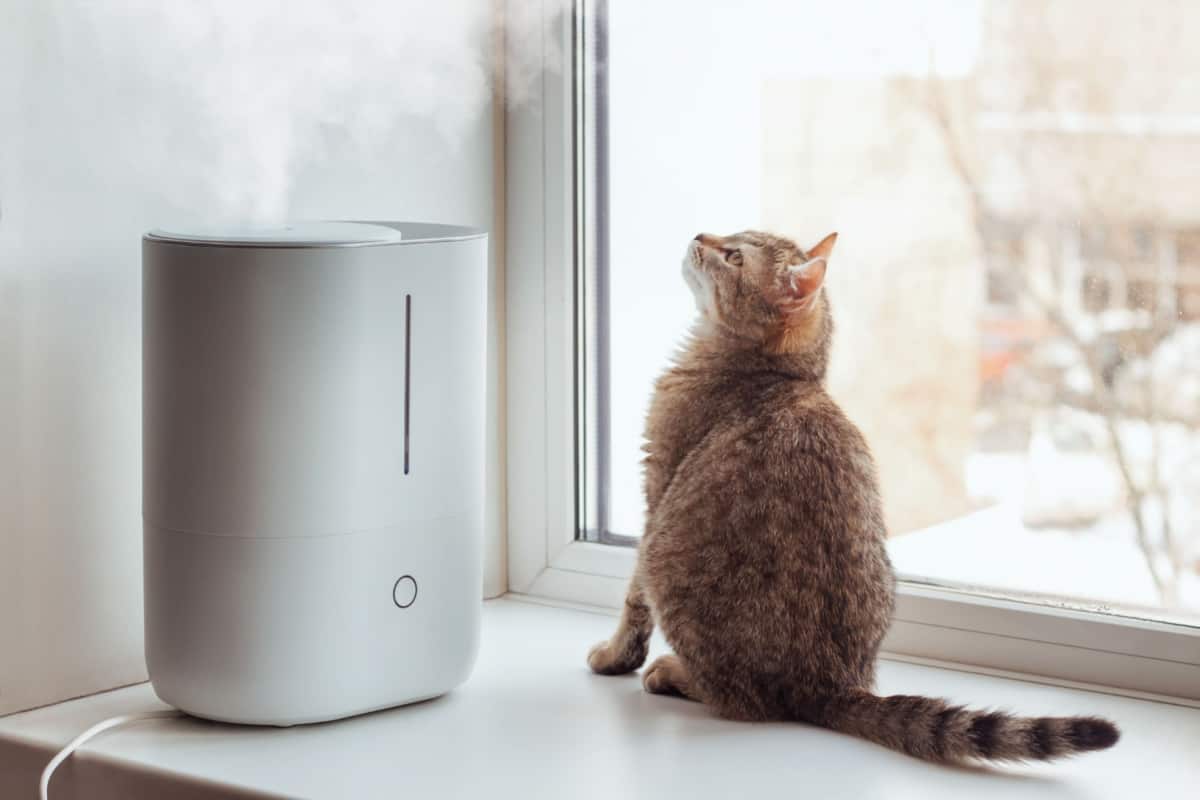
By circulating the air and filtering out these allergens, a HEPA purifier can significantly reduce the concentration of allergens in your home.
It's recommended to place these purifiers in areas where you spend most of your time, such as the living room or bedroom.
Fresh Air Ventilation
Allowing some fresh air into your home every day can help to clear out some of the allergens. This is especially effective in reducing indoor air pollutants, including pet dander.
On days when the weather permits, open your windows to create a cross-ventilation effect, allowing fresh air to come in and push out the allergen-filled air.
However, do note that if pollen counts are high outside or if you live in a highly polluted urban area, you might want to limit how much you do this, as it could introduce other allergens and pollutants into your home.
Regular Pet Bathing
Bathing your pet or wiping them down with distilled water can significantly reduce the allergens on their coat and skin.
Cats produce a protein known as Fel d 1, which is the primary allergen responsible for allergic reactions in humans. This protein is secreted via the cat's skin and saliva.
When cats groom themselves, this allergen-laden saliva dries and becomes airborne, spreading throughout your home.
The Result
You may find that just applying a few of the above suggestions greatly reduces your cat allergy symptoms, or you may need to put them all into practice.
Your physician or allergist may recommend a prescription or over-the-counter allergy medication to alleviate your symptoms.
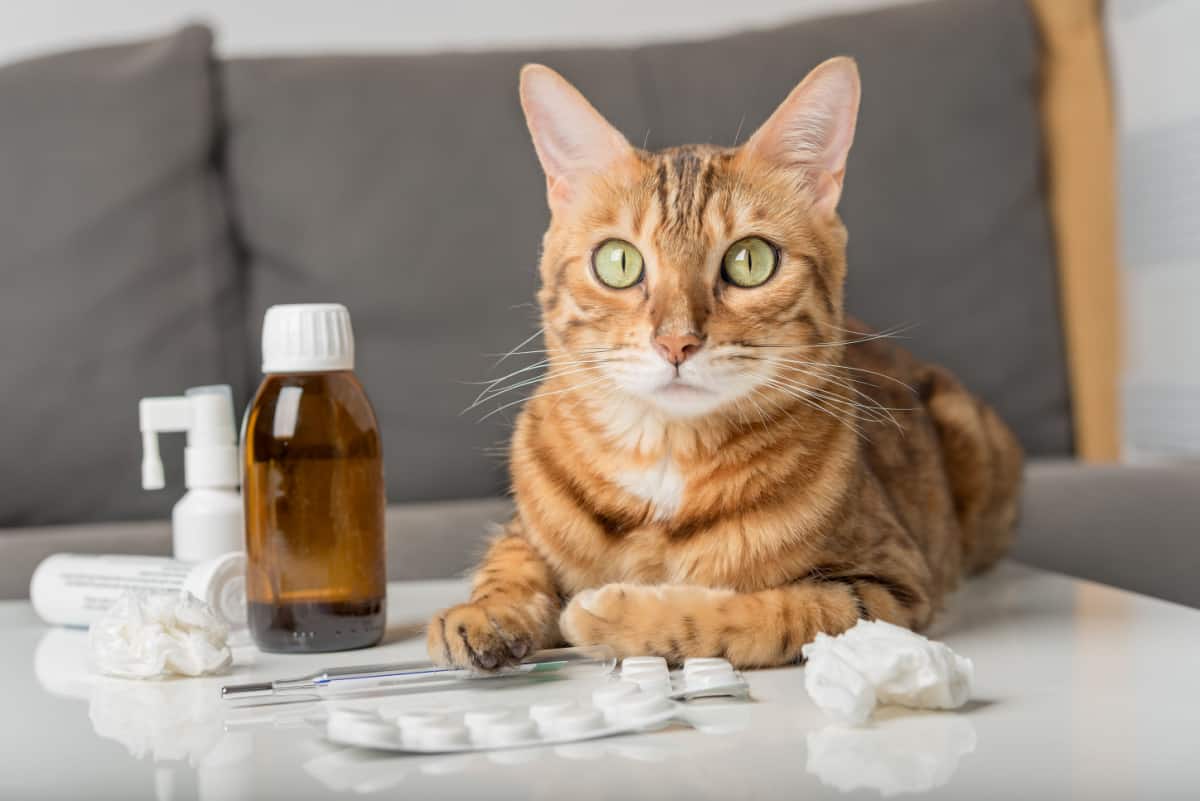
Depending on the severity of your cat allergy, you may be a candidate for immunotherapy or allergy shots. These injections build up your antibodies to reduce your symptoms.
People react differently to different allergy control methods. What works for some, will not work for others.
Do not give up if you do not see an immediate response. It can take a few weeks to cut down on the number of allergens in your home.
Hopefully adopting a few of the above strategies will result in a peaceful, non-sneezing life of happily ever after for you and your furry friend.
SIGN UP FOR THECATSITE'S EMAIL UPDATES >
Comments? Leave them using the comment section below. Questions? Please use the cat forums for those!
You might like some cat health-related topics, read them below.
11 Key Facts About Food Allergies In Cats
How To Set Healthy Boundaries For Your Cat
Note: We may get commissions for purchases made through links on this page.








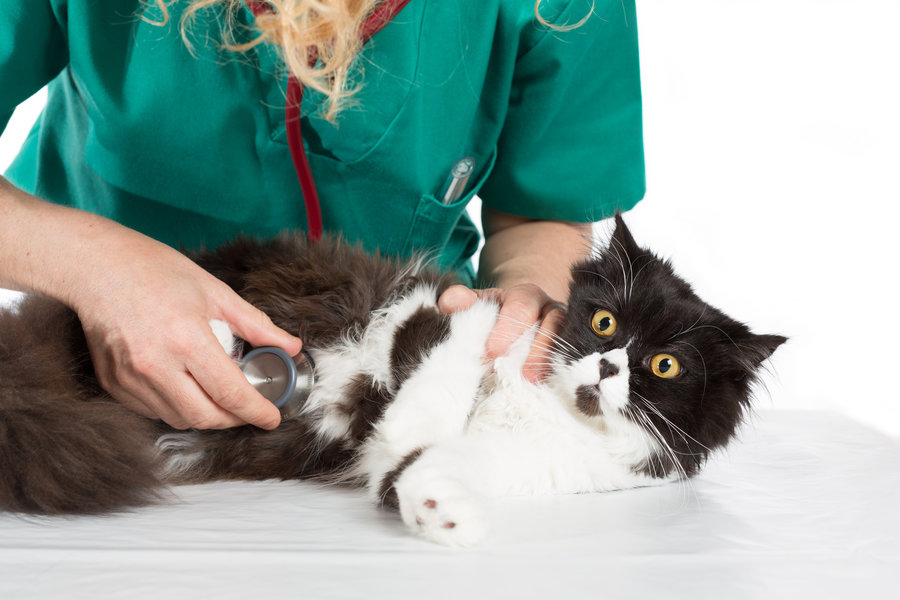
2 comments on “Living With Cat Allergy [A Comprehensive Guide]”